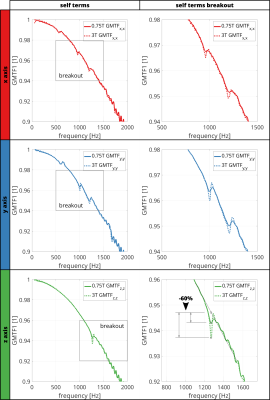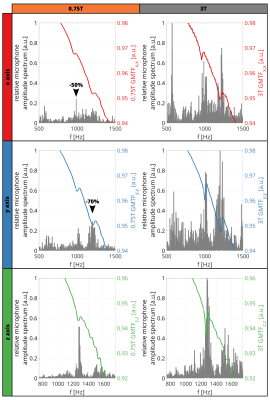Hannes Dillinger1, Sebastian Kozerke1, and Christian Guenthner1
1Institute for Biomedical Engineering, University and ETH Zurich, Zurich, Switzerland
1Institute for Biomedical Engineering, University and ETH Zurich, Zurich, Switzerland
On lower-field (0.75T), mechanical resonances are reduced leading to increased gradient fidelity and reduced audible noise. Maxima in the acoustic spectrum can directly be related to mechanical resonances in the GMTF.

Figure 2: Comparison of Gradient Modulation Transfer Functions’ (GMTF) self terms for 0.75T and 3T configurations. Mechanical resonances are identified by local dips (anti-resonances) and peaks (resonances) in the GMTF that deviate from the ideal low-pass GMTF. Resonances are generally less pronounced for 0.75T compared to 3T. A reduction by 60% for 0.75T is found for the antiresonance in the z axis GMTF.

Figure 4: Comparison of relative microphone amplitude spectra (RMAS) for the chirp sequence at 0.75T and 3T. For each gradient axis, RMAS were normalized to the maximal value. RMAS are reduced for 0.75T by up to 70% depending on the gradient axis compared to 3T. In addition, peaks in the RMAS correspond to the mechanical resonances identified in the GMTF.
